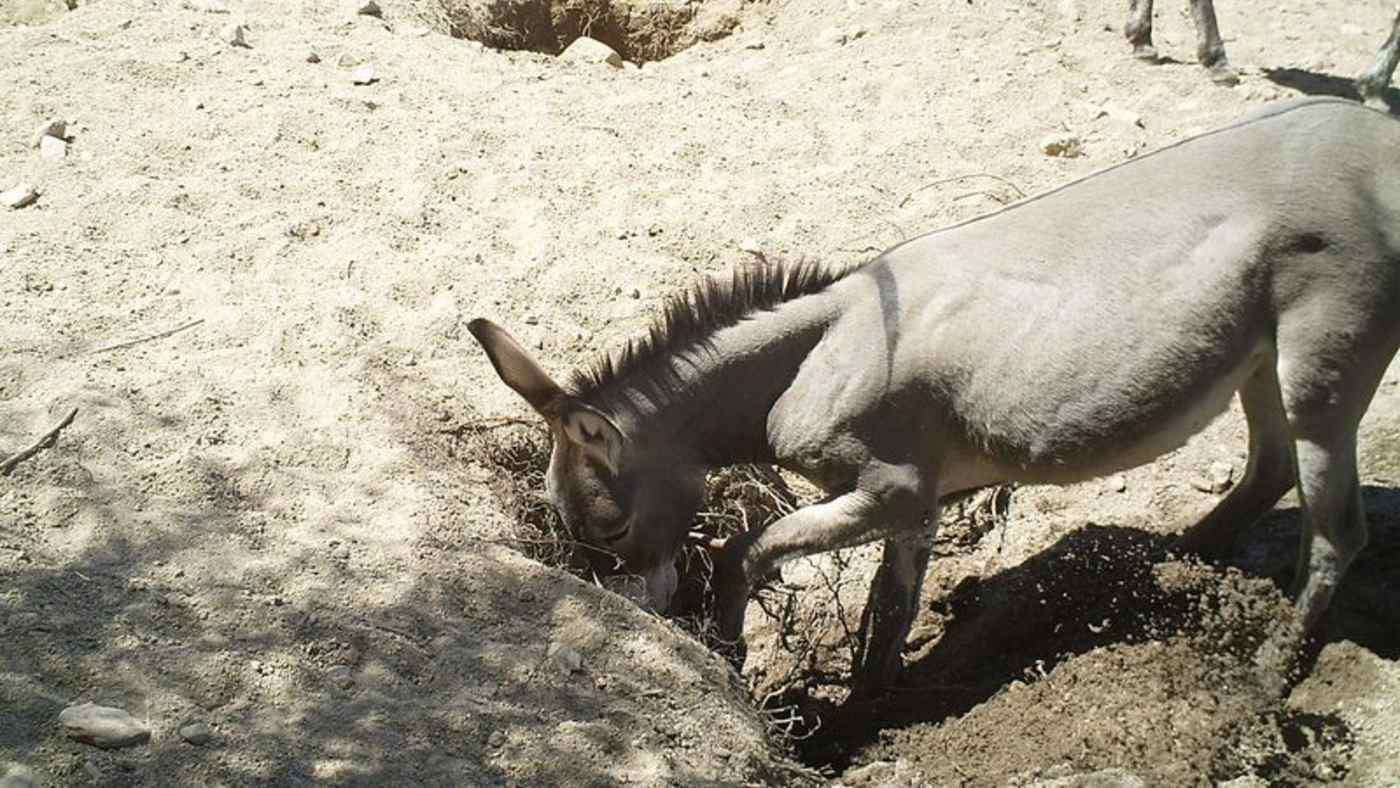Red Lobster Workers Spots Rare Breed: '1 in 30 Million' Calico Lobster Will Swim Easy At Virginia Sanctuary
An extremely rare calico lobster was luckily rescued from a Red Lobster restaurant in Virginia.

Research on feral horses and wild donkeys in the American southwest show they dig desert wells with their hooves in the soft sand of riverbeds, thus creating a network of extra fresh water sources for the creatures that are native to the area.
This find has thrown a wrench in the prevailing wisdom that feral equids, who were introduced by the Spanish, are pests that should be removed—as the scientist behind the research suggests they could be fulfilling a vital function once performed by now-extinct mammals from the Pleistocene.
In modern conservation, if an animal turns up where it didn't live a few hundred years ago and thrives there, it's typically considered invasive. Invasive species are almost always seen as a menace, with animals like foxes, cats, goats, mice, sheep, pigs, cane toads, rats, carp, and others terrorizing delicate ecosystems in Madagascar, Galapagos, and Australia, to name a few examples.
The Sonoran and Mojave Desert ecosystems currently host 95,000 wild horses and donkeys, which are considered invasive pests that outcompete other native herbivores, and suppress or trample native plants.
Conservation doctrine would say they should be exterminated or removed, but sometimes it's more complex than that, and Erick Lundgren from the University of Aarhus in Denmark has shown that the desert fauna's eagerness to drink from these equine wells should be considered before making any decisions about the species' future.
Lundgren found that 59 different species frequented the water holes, and that species diversity around them was 64% higher than the ecosystem's square-mile average.
"Equid wells strongly reduced the isolation of water features, reducing average nearest-neighbor distances between water features by an average of 65%, and at most by 99%," wrote Lundgren and his co-authors in the paper they published in Science.
Monitoring four different sites in the Sonoran and Mojave Deserts, and sampling over 3,258 trap nights from 2015-2017, Lundgren found bobcats, javelina, mule deer, scrub jays, and 55 other vertebrates enjoying a drink.
"There was a cacophony of organisms," he told New Scientist.
Digging for water is a common behavior among large mammals across the world, and in Africa, the elephant's water wells are a gift to surrounding species. Certain animals, such as the elephant, beaver, and bison, are called "ecosystem engineers" because they shape their environment so dramatically, the flora and fauna therein depend and expect their impact, and have adapted to accommodate or exploit it.
In his paper, Lundgren posits that American wild equids should be categorized as ecosystem engineers.
"By changing the abiotic environment around them, certain organisms can really strongly facilitate other species and processes," Lundgren said in a recent interview with Science. "The most notable aspect of deserts is the scarcity of water, and these animals can really enhance the availability of it through drought and in the hot summers where natural sources of water tend to dry up."
Questions like whether the wild equids' presence has changed the landscape in positive ways, what really constitutes invasive and how far back is that measured, and whether our role is to constantly try to preserve what exists now, understanding that 99% of all species have gone extinct, and that Earth's history has seen constant change, are common in mammal conservation.
In another of Lundgren's papers, the author points out that since the Pleistocene, a large variety of worldwide megafauna has gone extinct in many different kinds of ecosystems. The services, or engineering those species performed on the landscape to the benefits of many animals and plants that still exist today are largely a mystery.
Yet in number, introduced megafauna have restored about 15% of the estimated Pleistocene megafauna populations around the world.
Nowhere is this perhaps more distinct than in North America, which not only had prehistoric pachyderms in the form of the mastodon, but also hyenas, sprinting cougars, the largest bear ever, and interestingly, several species of wild horse.
"Recent and ancient extinctions and range contractions of megafauna, and the loss of their distinct ecological functions, has led to highly modified modern landscapes," he writes. "Although introduced megafauna have primarily been studied as threats to conservation goals, growing evidence suggests that they present a countercurrent to ancient losses, and may replace lost ecological functions."
Could the desert animals observed in Lundgren's study be reacting to a function which the ancestors of these modern donkeys and horses performed on the landscape tens of thousands of years ago? It's a thought-provoking question, one which Smithsonian details has hit the community in different ways, with some choosing to remain with the current doctrine, and others reconsidering the pest-status of wild American equids.
SHARE This Story With Pals Who Thirst for Good News…
Be the first to comment